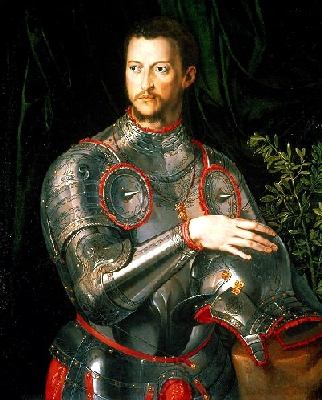

Tin Barons
An elegant placement game for two to three barons.
An elegant placement game for 2 to 3 barons.
Players: 2-3
Material: Board (Political Map of Bolivia) 20 sheets of influence, 2 mines and 1 chips sheet tin smelter player. The chips are made of wood or similar blocks of one color per player, the mines have a value x2 and x3 smelters.
Time: "? Players are
tin barons in Bolivia. Germain President Busch tries to diminish his power in the next year and a half must carefully plan which departments influence. Whoever got the most points of power at the end of the year and a half will get enough strength to call a coup against the president and become the monopoly of the tin.
Objective: Score more points power after 18 turns.
Map: Who has more chips in a department controls it. Each department gives a certain amount of points to whom the check at the end of the game. In addition, at the beginning of each shift who controls a department can make use of their advantage. If a department produces in your control, you gain 1 tab to bring it then. If you control headquarters can put up to 2 cards on your turn. If you control a Transportation Center: You can move 1 record among the three departments that joins that road. If you control the mining centers (Oruro and Potosi) receive a Production + Review [Remove Immediate rule to be very similar effect to La Paz] Immediate 1, you must put the card to begin your turn in any department controls. If you control the seat of the Judiciary (Chuquisaca) can move 1 of 1 tab opponent to a neighboring department (If roads are preference to move). If you have Airports (Beni) can move 1 card to you. Whoever controls Pando can not get points at the end, but in any draw, chip, controls the department who controls Pando. Santa Cruz who controls acts last forever.
2 players
Preparation: The first player gets 18 cards and 1 sheet influence mine (influenciax2), the second player receives 20 chips of influence.
Shifts: The player with the most influence on a department to begin the turn can use their advantages if possible and if you wish. Then the player must, if can place a sheet of influence in any department.
3 players
Preparation: Each player receives 16 cards of influence, 2 mine, 1 smelter. The first player can put 2 chips whatsoever. The second player can put 2 pieces of influence. The third player must put 1 sheet
influenceShifts: Shifts are solved in the same manner as between two players.
End Game
After 18 shifts who have more points to win. Other rules
Ties:
Optional Benefits:
-Producing Mines, Oruro and Potosí, remove 2 sheets of influence and win 1 of mine.
-Sucre, capital of the Republic: Remove 1 form, who controls Chuquisaca get the advantage of government headquarters. Who can regain control La Paz headquarters in the same way.
- Gas reserves (Tarija) is an optional benefit that should not be taken into account in the first few games.: If you control Tarija and Santa Cruz, Tarija worth 2 points at the end, If you control Tarija and Santa Cruz and Chuquisaca, Tarija worth 3 points at the end.
blind Alternative: Eliminate compensation for early players. In game 2-all begin as the second player, and start game 3 all equal. Players write their file where will this turn and any advantage of making use and disclose all at once. Example: T-Or to Sc 1M Lp. (Transport of Oruro to Santa Cruz [is assumed that the player is controlling Cochabamba] and put 1 mine in La Paz.) 1Cb1Bn (1 sheet 1 influence in Cochabamba and Beni influence form [presumably the player controls La Paz Chuquisaca if used or variant])
Playtest Note: Oruro is very strong and the game may be limited to dominate Dominate La Paz to Oruro, La Paz is balanced using the advantage Optional 'Sucre Capital of the Republic 'that allows you to move headquarters to making Chuquisaca Chuquisaca who controls using the advantage of Headquarters (Place 2 pieces per turn). But I think maybe put 2 pieces per turn too. To make Oruro is not strong rule eliminates the original mining centers and used the variant that allows' Producing Mine. "
Map
La Paz - 4 (See: You can put 2 pieces per turn)
Santa Cruz - 5 (Production: 1) (You play each turn last)
Cochabamba -3 (Transportation Center, can 1 record move across the road: Oruro-Cochabamba-Santa Cruz )
Oruro - 2 (Centers Miners: +1 if you control Oruro and Potosi) (Production 1) *
Potosi - 2 (Centers Miners: +1 if you control Oruro and Potosi) *
Chuquisaca - 2 (Transportation Center: You can move 1 tab through the road: Potosi, Chuquisaca, Tarija) (Judiciary Headquarters: Move 1 opponent) **
Tarija - 1 (If tied in Tarija, Pando wins who controls ) (gas reserves: If you control Also Santa Cruz and Chuquisaca 2 PV 3 PV ***)
Beni - 1 (Production 1) (Airports: Move 1 record yours free)
Pando - Earn Draw
Producing Mines* Use instead of produce immediately +1 Why? Oruro is very strong.
** Use the optional rule change See why? The control of La Paz defines the game, but beware, the player that controls La Paz early on can be very easily with no chips at the end.
*** Do not use ' gas reserves' the first few games.
